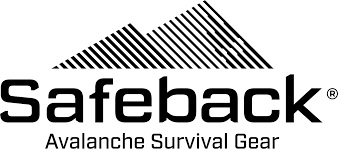
The South Tyrolean research center has launched an independent study to test the validity of a new device designed to increase the survivability of avalanche burial. The Norwegian start-up contacted Eurac Research to scientifically test the device and check whether it can significantly extend survival time in the snow.
(Bolzano, Italy – March 24, 2023) A research group led by Eurac agreed to conduct a medical trial with Safeback SBX, but with complete independence from Safeback – financing it with its own funds and those of the research partner “MountainLab ” (Mountain Medicine Research Group, University of Bergen). As a part of the trial, full burial tests were carried out on 30 volunteers who were among the first to experience complete snow burial with the system activated. The study’s results will be ready in the fall.
“The device has never been subject to a formal medical trial and the characteristics of the snow can possibly influence its effectiveness. For this reason, in our study we test the functionality with people actually buried in the snow and monitor various physiological parameters,” explains Giacomo Strapazzon, director of the Institute of Mountain Emergency Medicine at Eurac and responsible for the study.
In the event of complete burial in an avalanche, oxygen deprivation is most often the cause of death. Safeback SBX was created precisely to provide fresh air to the victim under the snow, thus increasing the chances of rescuers of finding buried people alive. A continuous flow of air, for 90 minutes, pumps through the system up to the breathing area thanks to two flexible tubes positioned on the shoulder straps.
“Safeback has based the product development of the SBX on research and testing. It has always been our intention that the product be tested by independent researchers to confirm the effect of Safeback SBX in terms of extending life expectancy when trapped under the snow. With all their previous research on the subject, we fully trust their expertise to design and conduct a medical trial to find out just this,” adds Tor Berge, Co-founder and CEO of Safeback.
The system functions via an electric air pump which exploits a particular property of snow: it is porous and permeable to air, even when snow is very heavy. The device essentially sucks the air out of the snow behind the victim’s back and delivers it up to their face. Thanks to this constant supply of air, even in burials without air pockets, the amount of oxygen present could therefore be sufficient to survive, despite the victim exhaling carbon dioxide.
“At first, we were afraid we would not be able to recruit people willing to be completely buried in the snow, lying face-down on their stomachs, to contribute to this research. Contrary to expectations, about a hundred people applied and some insistently asked to be selected,” says Eurac doctor and researcher Frederik Eisendle.
The selected volunteers were then subjected to preliminary tests to determine their eligibility to participate without outsized risks to their health, while field tests were carried out in a secret area of the Dolomites.
During the tests, the researchers constantly monitored the buried subjects’ oxygen saturation, various cardiovascular parameters, the frequency and depth of breathing, the density of the snow, and the ratio between oxygen and carbon dioxide while breathing in the snow. Tests have also been carried out to measure the body’s response to a stressful situation like this. To rule out a placebo effect, the test subjects were divided into two groups without telling them which group they belonged to: one control group was assigned a dummy device (which did not work, but made realistic sounds) and the other group a working device.
“Regardless of the results of this study, no device can ever guarantee survival under an avalanche. The most important thing is to prevent exposure, thanks to the avalanche forecasting and warning services or the training of companions on self-rescue techniques. If the device we are testing works well, those who go to the mountains will have an extra tool to extend the time in which the rescue is still effective,” points out Hermann Brugger, emergency doctor at Eurac Research.
Experts therefore expect that the differences in the time spent under the snow of the two groups give indications of the effectiveness of the device.
“We will still publish the results of the study as per scientific research practice, even in a case where they prove that the device does not work so well,” concludes Strapazzon.
Safeback SBX has already received the necessary certifications to be marketed by the manufacturer and will be sold in avalanche backpacks from Db and Bergans of Norway in the fall of 2023.
www.eurac.edu/en/institutes-centers/institute-of-mountain-emergency-medicine

